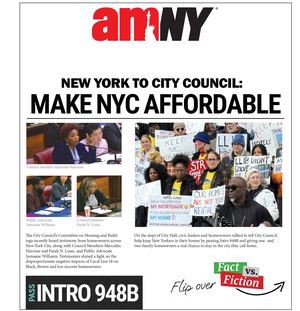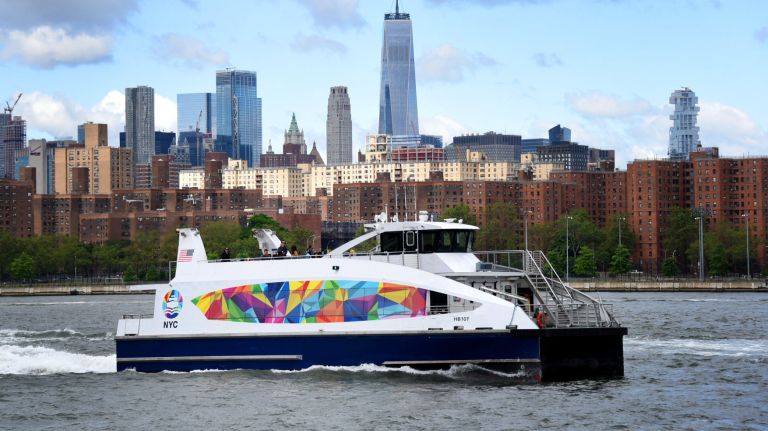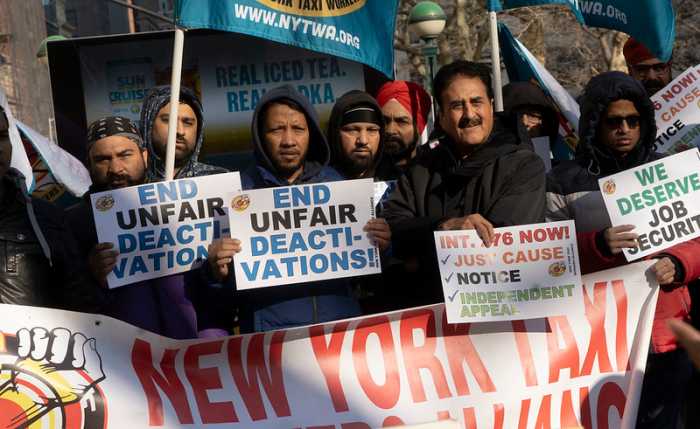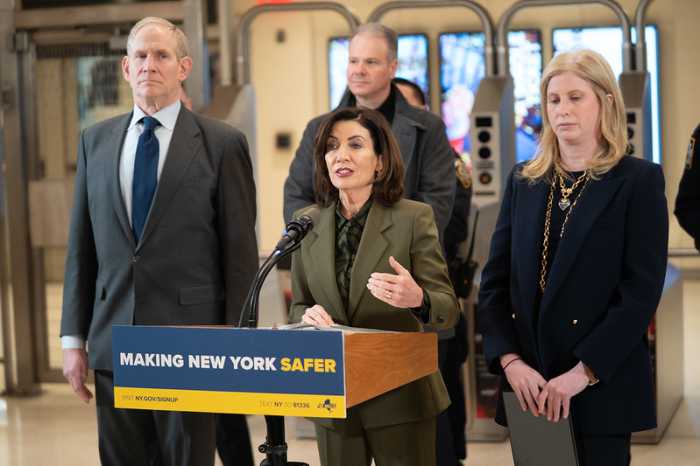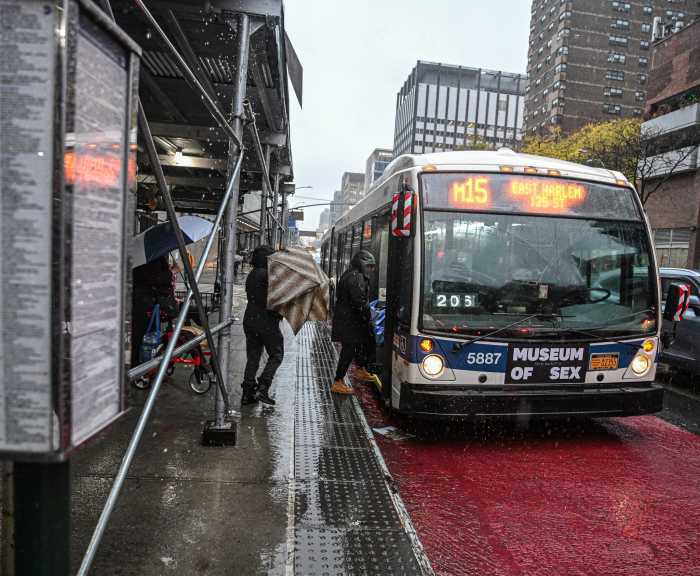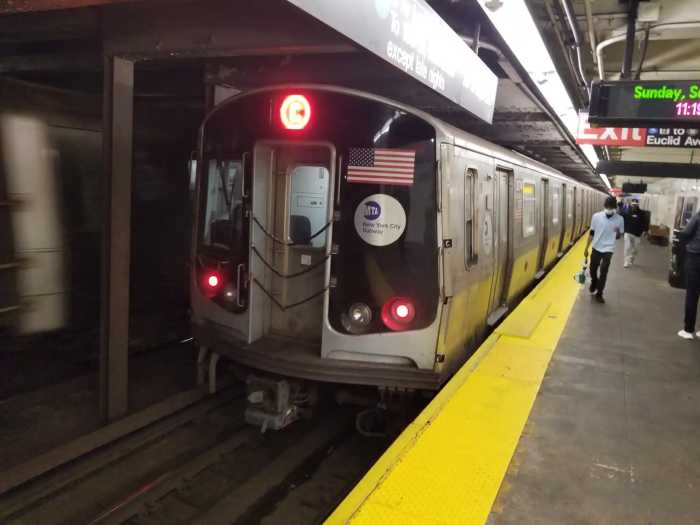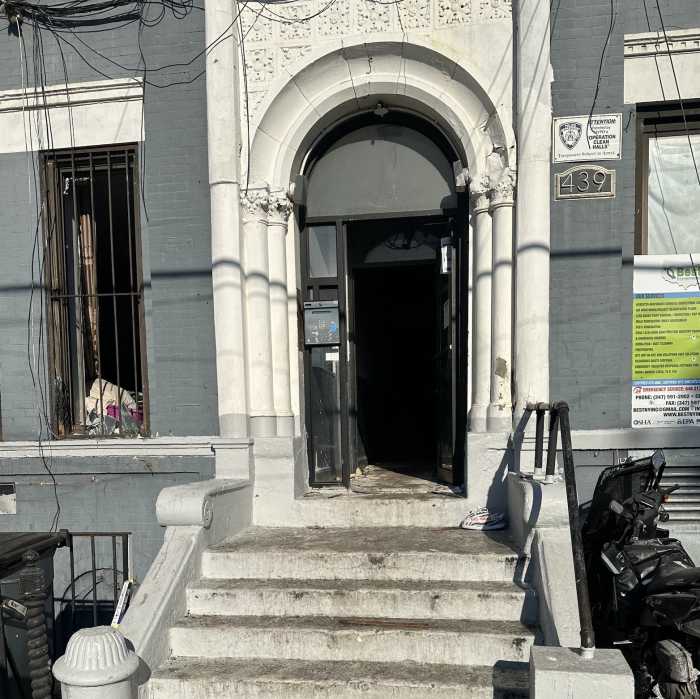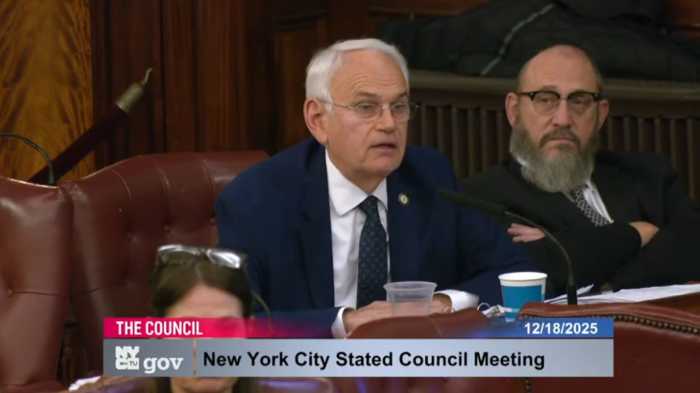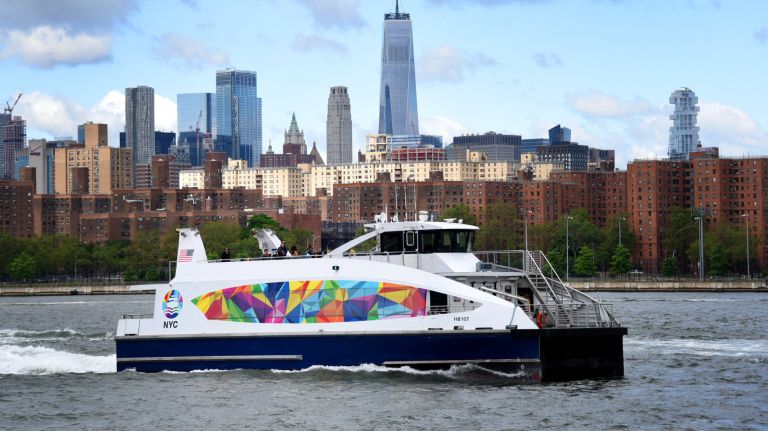
The mayor’s heavily subsidized ferry system is not as inclusive as advertised.
While touted as mass transit for “every kind of New Yorker,” the typical NYC Ferry rider tends to be upper-middle-class and white, according to new data analysis from the city’s Economic Development Corporation.
The report, released Tuesday, confirms concerns expressed by transit experts and advocates who have criticized the mayor’s ferries — his signature transportation initiative — as a niche, expensive network primarily serving wealthier waterfront residents.
“I think the ferry spending by the de Blasio administration shows that their transportation priorities plainly contradict the mayor’s language about addressing inequality,” said Ben Fried, a spokesman at the nonprofit TransitCenter.
About 64% of riders identify as white, with household incomes of between $75,000 and $100,000, according to the EDC, which collected 5,441 surveys over a two-week period in May and June. Nearly half of riders systemwide reported a household income of $100,000 or more.
Meanwhile taxpayers are subsidizing each ride at a clip of $9.34 — a much higher rate than that of the subways and local buses, which serve more diverse riders at costs of $2.73 and $4.59 per trip, respectively, according to a 2018 report.
Since launching in May of 2017, NYC Ferry’s six routes have served more than 12 million riders on what the city advertises as a comfortable and breezy nautical commute. The city’s EDC oversees the service, which is privately operated, with de Blasio pledging $638.5 million in capital to the service through 2022.
Fried and others have argued that the mayor could better help vulnerable New Yorkers by investing more time and resources into improving bus service. The average personal income of bus commuters is $28,455, compared to $40,000 on the subways, according to a 2017 report from the city comptroller. More than half of bus commuters are foreign-born and three quarters are people of color.
While the governor controls the MTA, de Blasio has sway over city streets; and bus speeds have slowed, with ridership plummeting, since the mayor took office. Advocates have pushed for the city to more aggressively dedicate space for buses to speed up service.
“What’s galling, I think, is that it’s not just the spending — it’s that this has been going on while everyone knows that bus service and bus ridership has been at a crisis point for years,” said Fried.
The Citizens Budget Committee and other groups have called for the city to increase NYC Ferry’s current base fare of $2.75. The de Blasio administration has pushed back though, believing it important to maintain the same fare as local subway and bus service.
The city currently plans to launch two new routes — one from St. George, Staten Island, and a second making stops in Coney Island and Bay Ridge — that will serve lower-median-income areas, according to the EDC. Though the CBC has warned that such long routes could require heavier subsidies.
“Since its launch in May 2017, the system has become massively popular and has enjoyed sky-high ridership,” said an EDC representative in a statement. “We look forward to expanding this service in the coming months to neighborhoods that have endured unacceptably long commutes to the City’s job centers … Our goal is to make this service even more equitable and continue to connect New Yorkers from around the city using this system.”
Potential mayoral hopefuls like City Comptroller Scott Stringer and Council Speaker Corey Johnson have been critical of the high subsidies. Stringer said in a statement that the city "must do more to ensure the ferry system reaches those who need it most."
Johnson took the EDC’s release of the data analysis as an opportunity to champion his proposal to take over city subways and buses from the MTA to create a more “holistic” transit system — a system where ferries would have a part to help areas underserved by transit.
“But there are real questions about the high levels of subsidy, especially since most New Yorkers ride subways and buses and those New Yorkers tend to have lower incomes,” Johnson said in a statement. “When it comes to transportation policy, we need to focus on speeding up buses and getting the trains to run on time.”
